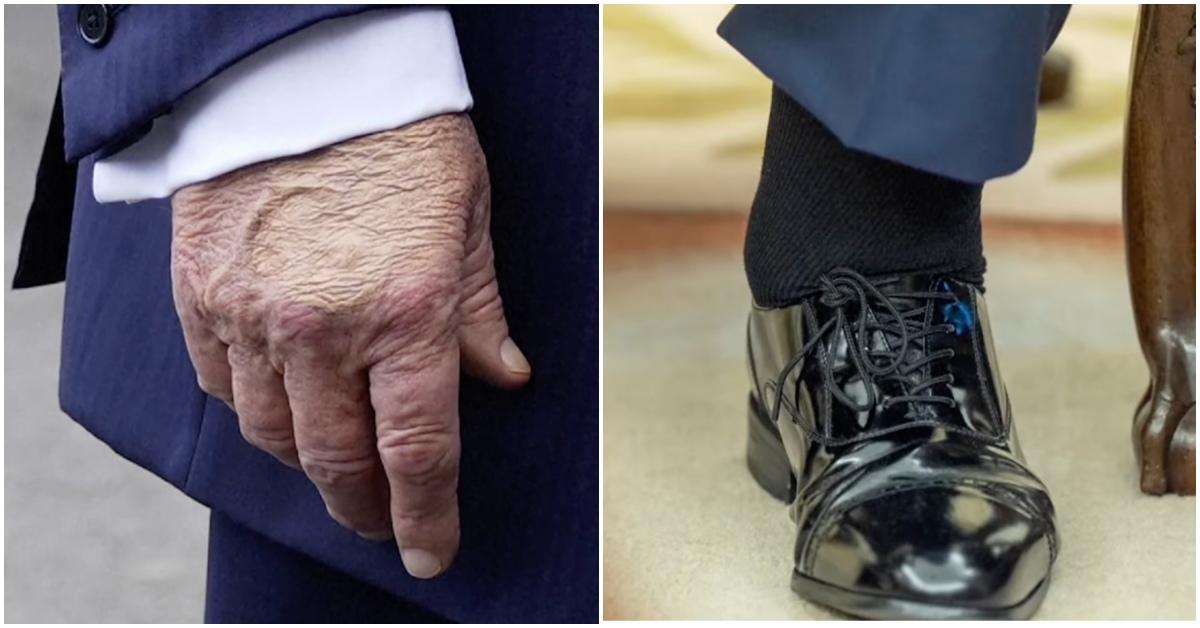What’s Really Going On With Donald Trump’s Health? All About His Condition
"This tells me this is worse than they are saying."
Published July 20 2025, 10:12 a.m. ET

President Donald Trump’s health was called into question in mid-July 2025 after people noticed bruising on his hand and what looked like swelling in his legs. Naturally, folks grew concerned because Trump, who is 79, has always been regarded as relatively healthy. But swelling in the legs can point to more serious health concerns, like poor circulation, fluid buildup, or an underlying medical condition.
Thanks to the internet and social media, word about Trump's concerning appearance spread quickly. It got to the point where his team had to release a statement to clear the air. So, here’s an update on President Trump’s health.
An update on Donald Trump's health. Is the president OK?

A discolored spot on Donald Trump's hand.
President Donald Trump was diagnosed with chronic venous insufficiency in mid-July 2025 following an extensive medical evaluation conducted by the White House Medical Unit, Press Secretary Karoline Leavitt confirmed during a July 17 press conference.
After noticing swelling in his legs and bruising on his hands, Leavitt said Trump was “thoroughly evaluated by the White House Medical Unit” and underwent a full diagnostic examination. “Comprehensive examination, including diagnostic vascular studies and bilateral lower extremity venous Doppler ultrasound, were performed and revealed chronic venous insufficiency, a benign and common condition, particularly in individuals over the age of 70,” Leavitt explained.

Donald Trump's swollen hand and foot.
She also clarified that there were no signs of deep vein thrombosis or arterial disease, perhaps some of the conditions the public speculated Trump might have had based on the symptoms he was displaying.
In an effort to be fully transparent, Leavitt also shared details of Trump’s lab work, which included “a complete blood count, comprehensive metabolic panel, coagulation profile, D-dimer, B-type natriuretic peptide, and cardiac biomarkers.” She said, “All results were within normal limits.”
Trump also underwent an echocardiogram, which “confirmed normal cardiac structure and function,” and, according to Leavitt, “no signs of heart failure, renal impairment, or systemic illness were identified.” Despite the diagnosis, Trump seems to be in good health.
What is chronic venous insufficiency, and how serious is it?
Chronic venous insufficiency happens when the valves in the leg veins don’t work properly, making it harder for blood to flow back up to the heart. Instead, the blood can “collect (pool) in your legs,” according to Johns Hopkins Medicine. Common causes include being overweight, having a family history of vein problems, a past injury, or a history of blood clots.
Johns Hopkins also notes that high pressure within the leg veins and lack of exercise can contribute to the condition. While treatable, managing symptoms often involves encouraging blood flow through regular exercise and elevating the legs, which can help reduce swelling, pain, and skin changes.
However, there are more invasive treatment options available for chronic venous insufficiency, including surgery, which Johns Hopkins says is reserved for severe cases, sclerotherapy, endovenous laser ablation, and medications, in addition to the non-invasive methods mentioned earlier.
That said, Trump’s condition isn’t typically considered life-threatening as long as symptoms are properly managed. It’s also fairly common, affecting about one in 20 adults, according to the Cleveland Clinic.